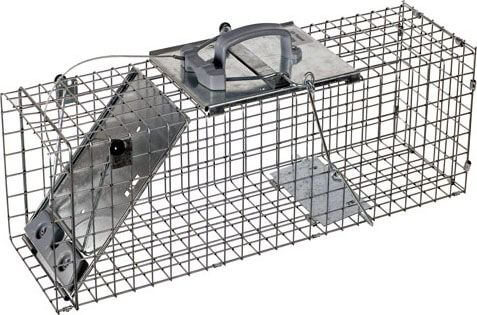Raccoons might be cute, but they certainly aren’t cuddly or harmless. Truth be told, these masked marauders can cause a host of problems, like disease, property damage, and attacks on pets. And being the expert excavators that they are, they’ll dig through your garbage, garden, and yard faster than a kid under the tree on Christmas morning. And that’s not even the half of it. Besides being carnie strong, they’re also idiot savant smart. As a matter of fact, I know of a few raccoons that cleverly framed my friend Brian…
True Story:
A raccoon’s tale of the missing chocolate
Sonia, Brian’s wife, was fed up with her husband sneaking behind her back, gobbling up her precious chocolate. As if that wasn’t bad enough, each time, he didn’t even have the common decency to throw out the empty wrappers. It was as if he was purposely leaving them there to torment her, taunting the poor woman with the promise of delicious treats she would never have.
Wanting to get to the bottom of things, Sonia confronted her husband about the missing candy. Brian adamantly denied ever touching her chocolate, even promising to take a polygraph at the local police station in the hopes of proving his innocence—not to mention keeping him out of the proverbial dog house.
To make a long story short, it turned out that a family of raccoons was getting into their house through the swinging cat door. In the middle of the night, they would creep in, open the cupboard doors, literally unwrap the chocolate and eat it before exiting the same way they came in, without anyone being the wiser.
What’s the moral of the story here? Raccoons will not only put your health and property at risk but also wreak havoc on your marriage. So, if you have these clever criminals living in or around your home, you need to get rid of them, fast.
If your home has been infiltrated by these furry masters of mayhem, you’ll need to contact a professional pest control company, fast!
How to trap a raccoon
One way to remove raccoons from your property is to trap them—and by trap, we mean capture, not kill (it’s illegal to kill raccoons in B.C.). But before you get all animal bounty hunters like, remember this, they have razor-sharp teeth, grasping hands, and are bigger and heavier than a thanksgiving turkey. They are known to literally drown medium size dogs when they feel threatened.
If the idea of coming face-to-face with “Furry McSlashy” isn’t sitting well with you, get a pest control specialist to take care of your raccoon problem.
For the rest of you do-it-yourselfers out there, here are some handy tips on how to trap a raccoon. Catching a raccoon can be tricky, but it’s not as hard as you might think. To be a successful raccoon trapper, you just need to remember two key things—raccoons are curious and they are always on the lookout for food.
But keep in mind, these crafty critters are the Einsteins of the animal world (I’d put money on the chance they probably have a higher IQ than many of my family members). If a raccoon escapes your trap, good luck trying to capture them again. They’re hip to the whole “fool me once, shame on you; fool me twice, shame on me” thing. At the end of the day, you’ve basically got one shot at it this, so don’t mess it up.
Learn how to select a humane raccoon trap
First of all size matters, when it comes to simple, safe, and sympathetic solutions to capturing raccoons, remember, not all traps are created equal. Some are humane, some are illegal, and some are just down-right cruel. There are plenty of options out there, so do your homework. Essentially, you’ll be looking for a “live trap” that won’t kill or harm the animal.
Once you find a humane raccoon trap, choose the right size. Raccoons don’t like confined spaces, so don’t waste your money on a trap that’s too small. Conversely, you don’t one that’s too large either. The weight of the raccoon might not trigger the door, resulting in a free lunch for them and a new playpen for your cat or dog.
A quick internet search or a call to your friendly neighbourhood pest control provider will point you in the right direction on the best size and where to buy or rent a trap.

This Havahart humane animal trap – one of a number of commercially-available pest control solutions – It is used for the live trapping of squirrels, rabbits, skunks. To trap Raccoons successfully you will need a bigger trap than this one.
- Solutions Pest Control Online Store:
- We have humane raccoon trap avaialbe if you need one.
How to set a raccoon trap and place the trap properly
Knowing exactly where to set your trap is really important if you hope to catch these pests quickly. It’s going to take a little detective work on your part, so roll up your sleeves and get to searching. If you come across raccoon tracks, droppings, and/or property damage, you’ll definitely want to put your trap in any of those areas. If you can’t find any visible signs, you can also try placing your trap in common locations raccoons like to frequent, including gardens, patios, attics, and areas where trash cans are kept.
How to Bait the Raccoon trap
Now that you have a pretty good idea of where to set your tap, it’s time to bait it. But make sure you do a good job here. Using the wrong bait (or no bait at all) is a huge waste of time that is only going to result in an empty cage and more headaches.
To make the trap as enticing as possible to the raccoon, bait it with foods they love. For example, you can use fish, crisp bacon, fresh vegetables and even cat food. Yup, for some reason, raccoons just can’t seem to get enough of the stuff. To avoid trapping the neighbourhood pets, however, it’s a good idea to bait the cage with sugary foods like marmalade or marshmallows.
Once you’ve finished baiting the trap, weigh it down with a heavy object like a brick or a stone. Raccoons are pretty strong, capable
of flipping over a cage, drowning a dog like a mentioned earlier, and escaping if it is not properly secured.
How to Test the trap
To ensure things go off without a hitch, test your raccoon trap to see if it is working the way it should. Once you’ve set the trap, give it a couple of test runs by activating the trigger. If the trap is closing properly, you’re good to go.
Check the trap
Check your traps as often as possible—preferably twice a day. If you snag a raccoon, you don’t want to add to its stress by leaving the animal stranded in the trap longer than it has to be. There is also the possibility of trapping a non-target animal like your neighbour’s dog, making frequent checks even more important. Raccoons will usually be captured during the night, so inspect your trap first thing in the morning.
Precaution – How to handle a captured raccoon
Once you’ve caught the raccoon, take extra precaution when handling the cage. Raccoons have sharp claws and teeth, and they’re not afraid to use them, especially when they are frightened. Wearing thick clothing and gloves will help protect you from scratches and bites. Place a blanket over the cage to help keep the raccoon calm during the relocation process. If you are not sure where to release the animal, contact your local pest control provider. Just a side note here, the neighbour trapped raccoons this summer in the porch attic and drove them up the mountainside. Not 10 days later and the raccoons were back. Choose wisely and relocate your animal much farther than you would initially expect to rid your home of this creature
How to Prevent raccoons from returning
Now that you’ve finally gotten rid of the raccoon, it’s important to take steps to prevent more from coming back. After all, the best way to deal with a raccoon problem is to stop it from happening in the first place. Here are a few tips to help drive off these masked bandits:
- Raccoons will eat anything—and we do mean anything. Being omnivorous, they will dig into your dumpsters and trash bins, looking for whatever fruit, veggies, and meat they can get their dexterous little digits on. So, make sure that your garbage lids are tightly secured.
- Racoons are nocturnal, so why not use that to your advantage? To scare them off, use motion-detecting floodlights to keep them the out of your yard.
- Always on the lookout for free room and board, these climbing critters will go to great lengths to sneak into your home. Inspect your property for any access points and seal them off. And while you’re at it, keep tree limbs away from the rooftops.
- When it comes to stuffing their furry faces, raccoons aren’t finicky. They’ll eat whatever’s on the menu, including pet food. So, don’t leave any dog or cat chow outside. Oh, that also includes bird feeders. They plow through them in a single sitting.
- Taking a few raccoon-preventing precautions now will save you oodles of time, money, and effort trying to scoot them out of your garden, attic, or garage later.
Entering buildings, standing up to Fido, digging into your wife’s chocolate— raccoons are unbelievably adaptable, brave, and clever, making them a formidable opponent to deal with. When it comes to trapping these nocturnal nuisances, do all that you can to stack the odds in your favour. Following these handy tips will help you catch your critter fast and get back to enjoying a racoon-free home.
If you don’t want all the hassles that make do-it-yourself trapping a serious pain in the butt, get in touch with a professional pest control company.
Solutions Pest Control, provides effective wildlife services for both homes and businesses. From residential homes to commercial and industrial property, our wildlife technicians will humanely trap and relocate racoons, as well as help prevent them from coming back.
For fast, reliable, and safe racoon removal, contact Solutions Pest Control today.


